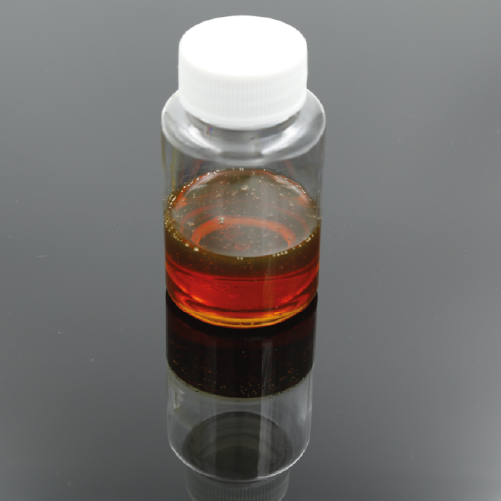Ashless Dispersant Chemical Additives: What They Are and How They Work
In the field of lubricants and engine oils, the inclusion of chemical additives is crucial to maintaining engine performance, prolonging the life of mechanical systems, and reducing emissions. Among these additives, ashless dispersants play a critical role in ensuring the cleanliness of engines and improving overall performance. But what are ashless dispersant chemical additives, and how exactly do they function within lubricants?
What Are Ashless Dispersant Chemical Additives?
Ashless dispersant chemical additives are special types of compounds used in oils, particularly in engine lubricants, to prevent the buildup of harmful deposits such as sludge, varnish, and soot. The term “ashless” refers to the fact that these additives do not leave behind any solid residues (often called “ash”) when combusted. This characteristic makes them particularly valuable in applications where reducing emissions is a priority.
These additives belong to a broader category of dispersants, which are chemical compounds designed to keep solid particles suspended in a liquid, preventing them from accumulating on engine surfaces. Ashless dispersants are primarily composed of long-chain hydrocarbon molecules with polar head groups that enable them to interact with various contaminants in the oil.
Composition of Ashless Dispersants
Ashless dispersants are made up of several key chemical components:
- Hydrocarbon Chains: These long chains form the backbone of the dispersant molecule and are responsible for the solubility of the additive in oil.
- Polar Head Groups: These groups are typically nitrogen or oxygen-based and are designed to interact with particles of soot, sludge, or other contaminants. By attaching to these particles, the polar head groups prevent them from agglomerating (clumping together).
- Non-Metallic: Unlike some other types of dispersants, ashless dispersants do not contain metal ions, which can leave residues upon combustion.
The result of this composition is an additive that effectively keeps contaminants suspended in the lubricant, allowing them to be carried away by the oil rather than forming deposits inside the engine.
How Do Ashless Dispersants Work?
The primary function of ashless dispersants is to maintain the cleanliness of the engine by preventing the buildup of deposits. When fuel burns in an engine, it generates byproducts such as carbon, soot, and unburnt hydrocarbons. Over time, these byproducts can accumulate on engine surfaces, leading to increased wear, reduced performance, and even engine failure. Here’s a step-by-step breakdown of how ashless dispersants work:
Suspending Contaminants: As engine oil circulates, ashless dispersants attach to contaminants such as soot and sludge. These contaminants are then kept in suspension within the oil, preventing them from settling on critical engine parts.
Preventing Agglomeration: Once contaminants are suspended, the dispersant molecules prevent them from sticking together and forming larger particles. This action ensures that the contaminants remain small and evenly distributed throughout the oil.
Facilitating Removal: By keeping contaminants suspended, ashless dispersants make it easier for the engine’s filtration system to remove them. When the oil is changed, these contaminants are drained away along with the oil, ensuring that the engine stays clean and operates efficiently.
Reducing Emissions: Because ashless dispersants do not contain metal ions, they do not produce ash when burned. This characteristic is particularly important in modern engines, which are designed to meet stringent emissions standards. Ashless dispersants help reduce the formation of harmful exhaust particulates, contributing to cleaner air.
Benefits of Ashless Dispersants

Ashless dispersants offer several key benefits, making them a vital component in modern engine oils:
Engine Cleanliness: By preventing the buildup of sludge and varnish, ashless dispersants help maintain the cleanliness of critical engine components such as pistons, rings, and valves. A cleaner engine is more efficient and has a longer service life.
Extended Oil Life: By suspending contaminants and preventing deposit formation, ashless dispersants help extend the life of the oil. This means fewer oil changes are required, reducing maintenance costs for vehicle owners.
Improved Engine Performance: When engines are free of harmful deposits, they can operate at peak efficiency. This leads to better fuel economy, smoother operation, and reduced wear on engine parts.
Environmental Benefits: Ashless dispersants contribute to lower emissions by preventing the formation of particulates that would otherwise be released into the atmosphere. This makes them an important tool in the effort to reduce air pollution from internal combustion engines.
Applications of Ashless Dispersants
Ashless dispersants are widely used in various types of lubricants and oils, especially in:
Automotive Engine Oils: Modern cars, trucks, and motorcycles all benefit from the inclusion of ashless dispersants in their engine oils. These additives help keep engines running smoothly, reducing the likelihood of deposit-related problems.
Industrial Lubricants: In industrial applications, such as hydraulic systems and compressors, ashless dispersants play a crucial role in maintaining the cleanliness and efficiency of machinery. By preventing sludge and varnish buildup, these additives help reduce downtime and extend equipment life.
Marine and Aviation Oils: Ashless dispersants are also commonly used in marine and aviation lubricants, where cleanliness and reliability are paramount. The prevention of carbon and soot deposits is essential for the safe and efficient operation of engines in these demanding environments.
The Role of Ashless Dispersants in Modern Engine Oil Formulations
Modern engine oil formulations are complex blends of base oils and various additives, each serving a specific purpose. Ashless dispersants are just one of many additives used to enhance the performance of engine oils. Other common additives include:
- Anti-Wear Agents: These additives form a protective layer on metal surfaces, reducing wear and prolonging engine life.
- Detergents: Detergents help neutralize acids and keep the engine clean, working alongside dispersants to prevent deposit formation.
- Viscosity Index Improvers: These additives help maintain the oil’s viscosity across a wide temperature range, ensuring proper lubrication in both hot and cold conditions.
- Antioxidants: By preventing the oxidation of the oil, antioxidants help extend its service life and prevent the formation of harmful sludge and varnish.
In modern engine oils, ashless dispersants play a critical role in maintaining engine cleanliness and preventing deposit formation. Their ashless nature makes them especially valuable in applications where emissions control is important.
How Ashless Dispersants Differ from Other Additives
Ashless dispersants differ from other types of dispersants and detergent additives in that they do not contain metal-based components. Traditional detergent additives often include elements like calcium, magnesium, and sodium, which, while effective at neutralizing acids and cleaning engine surfaces, can leave behind metallic ash when burned. This ash can accumulate in engines and exhaust systems, leading to operational issues and reduced efficiency.
In contrast, ashless dispersants are organic compounds that decompose cleanly, without leaving metallic residues. This makes them particularly suitable for engines with advanced emission control technologies, which can be negatively affected by ash buildup.
Final Thoughts
Ashless dispersant chemical additives are an essential component of modern engine oils and lubricants. Their ability to prevent the buildup of harmful deposits, reduce emissions, and extend the life of both the oil and the engine makes them invaluable in automotive, industrial, and marine applications. By keeping engines clean and operating efficiently, ashless dispersants contribute to improved performance, lower maintenance costs, and a cleaner environment. As emissions regulations continue to tighten, the importance of ashless dispersants in lubricant formulations will only increase, ensuring that engines remain clean, efficient, and environmentally friendly.
FAQs

What is Transformer Oil? Types, Properties & Uses Explained
What is Transformer Oil? Types, Properties, Uses, and Comparisons Discover More Transformer oil is a critical component in electrical power systems, ensuring the efficient and safe operation of transformers. It acts as both an insulator and a coolant, preventing electrical breakdowns and dissipating heat generated during transformer operation. In this detailed guide, we will explore what transformer oil is, its different types, key properties, applications, maintenance, and how to choose the best oil for your needs. We’ll also introduce Rumanza

Does Your Car Need High Mileage Oil? (Signs You Should Switch)
Does Your Car Need High Mileage Oil? (Signs You Should Switch) Discover More As vehicles age, their engines undergo significant wear, leading to reduced efficiency and potential breakdowns. One of the most effective ways to maintain an older engine is by switching to high-mileage oil, specially formulated for cars with 75,000 miles or more. But how do you know if your car needs it? What are the key benefits, drawbacks, and alternatives? And why should you consider Ruamnza Xrace Pro Oil for your high-mileage vehicle?

Does Your Diesel Engine Need a Special Oil? (The Truth Revealed)
Does Your Diesel Engine Need a Special Oil? (The Truth Revealed) Discover More When it comes to maintaining a diesel engine, one of the most critical decisions you’ll make is choosing the right oil. Diesel engines operate under extreme conditions—high compression, intense heat, and heavy loads—which means they require a lubricant that can withstand these challenges. But does your diesel engine really need a special oil, or can you use any high-quality motor oil? In this comprehensive guide, we’ll uncover the

What is Anti-Freeze Coolant? Types, Colors & How to Use
What is Anti-Freeze Coolant? Types, Colors & How to Use Discover More Anti-freeze coolant, also known as engine coolant or radiator fluid, is a specially formulated liquid that regulates engine temperature, prevents overheating in summer, and protects against freezing in winter. It is a mixture of water, ethylene glycol or propylene glycol, and chemical additives that enhance engine efficiency and longevity. Without proper coolant, engines can suffer from: Overheating (leading to warped cylinder heads or blown gaskets) Freezing (causing cracked engine blocks in cold climates) Corrosion (damaging radiators,

What is ATF? Types of Transmission Fluid & When to Change It
What is ATF? Types of Transmission Fluid & When to Change It Discover More Transmission fluid is one of the most critical yet often overlooked components in a vehicle’s maintenance routine. Whether you drive an automatic, manual, continuously variable transmission (CVT), or dual-clutch transmission (DCT) vehicle, the right transmission fluid ensures smooth operation, longevity, and peak performance. What is Automatic Transmission Fluid (ATF)? Automatic Transmission Fluid (ATF) is a specialized lubricant designed to reduce friction, cool transmission components, and facilitate smooth
